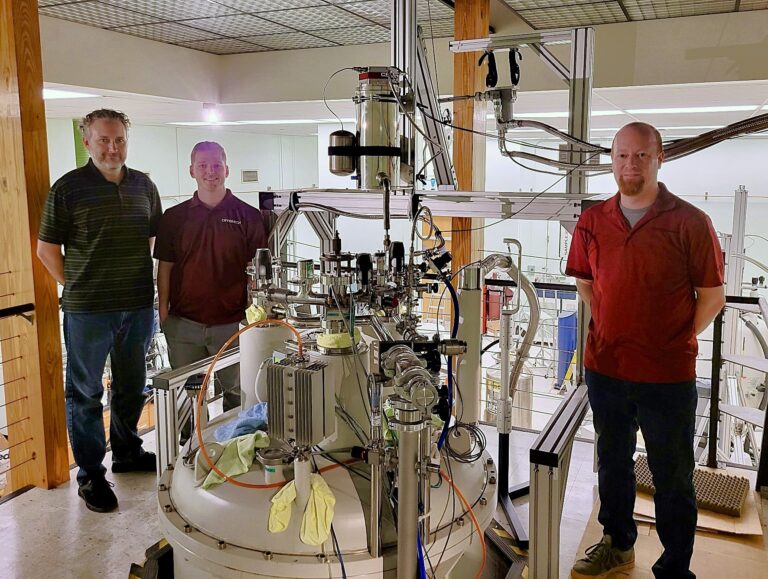
How Low Temperatures Help to Advance Medical and Life Sciences
Medical and life science helps us develop our knowledge of the biological world to find solutions that improve, for example, healthcare. The discipline includes fields such as medicine, clinical sciences, biotechnology and other medical sciences. The research carried out seeks to understand or illuminate the underlying phenomena to achieve scientific or technological advances that benefit us through the application of medical or clinical improvements.
As an example, studying the complex molecular structures of matter leads to advances in many fields, from nutrition science to medicine. Developing advanced diagnosis methods or new types of treatment provides better healthcare for patients, and enables treatments to be more effective.
Within medical and life sciences, there are many areas where the use of low temperatures is vital. When studying matter, diagnosing patients, or providing lifesaving treatments, there are many systems and situations that require cryogenic temperatures.
At Bluefors, we support these fields by providing reliable cryogenic products for low temperature research and operation, and the sustainable management of the liquid helium utilized in many of the systems.
Nuclear Magnetic Resonance Spectroscopy
Nuclear Magnetic Resonance (NMR) spectroscopy is the leading technique for determining the structure of organic compounds. NMR is a phenomenon that occurs when the nuclei of certain atoms in a strong, constant magnetic field are subjected to a weak oscillating magnetic field. This causes the nucleus to resonate. NMR spectroscopy is commonly used to determine the structure of proteins.
NMR requires very strong magnetic fields, sometimes over 20 tesla. These fields are created using superconducting magnets cooled with liquid helium, which results in helium boil-off during operation.
We provide solutions for helium recovery and direct reliquefaction to help protect the world’s finite helium supply. Additionally, our cryocoolers can be integrated into your design to create zero-loss or dry magnets.
New product: Cryomech HeRL02-RM is our new Helium Reliquefier designed specifically for helium recovery from a single NMR instrument. It’s specifically designed to meet the capacity of an NMR magnet and employs vibration mitigation techniques that do not interfere with NMR spectroscopy.


Magnetic Resonance Imaging
Magnetic Resonance Imaging (MRI) is used in Medical Science to form detailed, three-dimensional anatomical images.
MRIs use superconducting magnets to create a strong magnetic field that forces protons in the body to align with it. When the field is turned off, the system measures the speed and energy of the protons as they realign. Using this process, physicians can identify differences in tissue to detect and diagnose diseases.
MRI technology requires superconducting magnets to produce the images. The resolution of images is greater with higher strength magnetic fields, for example above 1.5 tesla. Because of this MRI has become the largest commercial application of superconductivity.
At Bluefors, we offer solutions for pre-cooling and cooling superconducting magnets. Our Cryomech Cold Helium Circulation Systems are used for pre-cooling, and Cryomech Pulse Tube Cryocoolers are used to conductively cool the magnets. Our products are often used with high field MRI systems used in preclinical research.
Magnetoencephalography
Magnetoencephalography (MEG) is a non-invasive technique for mapping brain activity. This is done by measuring the extremely small magnetic fields generated by the electrical activity of neurons.
To detect these fields, Superconducting Quantum Interference Devices (SQUIDs) are used. SQUIDs are extremely sensitive to changes in magnetic flux.
MEG systems have thousands of SQUID sensors to do the measurements, all cooled to 4.2 K using liquid helium. Our Cryomech Liquid Helium Management Systems are used with MEG systems to deal with the helium boil-off.
One important use of this technology is in the treatment of epilepsy, where it is used to localize the likely source of seizures.


Fourier Transform Mass Spectrometry
Mass spectrometry is used in variety of applications in life sciences to analyze samples and mixtures by measuring the mass-to-charge ratio of ions.
A Fourier Transform Mass Spectrometer (FTMS) is a type of mass spectrometer that analyzes the cyclotron frequency of ions when trapped in a magnetic field.
FMTS has ultrahigh resolving power and mass accuracy, making it possible to determine the elemental composition of very complex samples. These systems are used, for example, in proteomics (the study of proteins), cancer research and metabolomics (the study of small molecules).
Bluefors offers solutions where the superconducting magnets used in these systems are cooled using our Cryomech Pulse Tube Cryocoolers. Our Cryomech Cold Helium Circulation Systems are also used for magnet pre-cooling.
Proton Therapy
Proton therapy is a type of radiation therapy that uses energy from protons instead of x-rays. Certain types of cancer can be treated using this technology, with fewer side effects. Proton therapy can be more precisely targeted at a tumor, making it a less invasive treatment method.
The method separates protons from hydrogen atoms and speeds them up in a particle accelerator such as a synchrotron or cyclotron. A superconducting magnet focuses a 5 mm beam of protons, and direct the beam at the tumor, adjusting the energy to penetrate to a precise depth. Our Cryomech Cryocoolers are used to cool the superconducting magnets essential for proton therapy.

Manage Your Liquid Helium Consumption
New Product
A New Helium Recovery Solution for Single NMR Units
Cryomech HeRL02-RM is our new Helium Reliquefier designed for helium recovery from a single NMR instrument. It’s specifically designed to meet the capacity of an NMR magnet and employs vibration mitigation techniques that do not interfere with NMR spectroscopy.


















